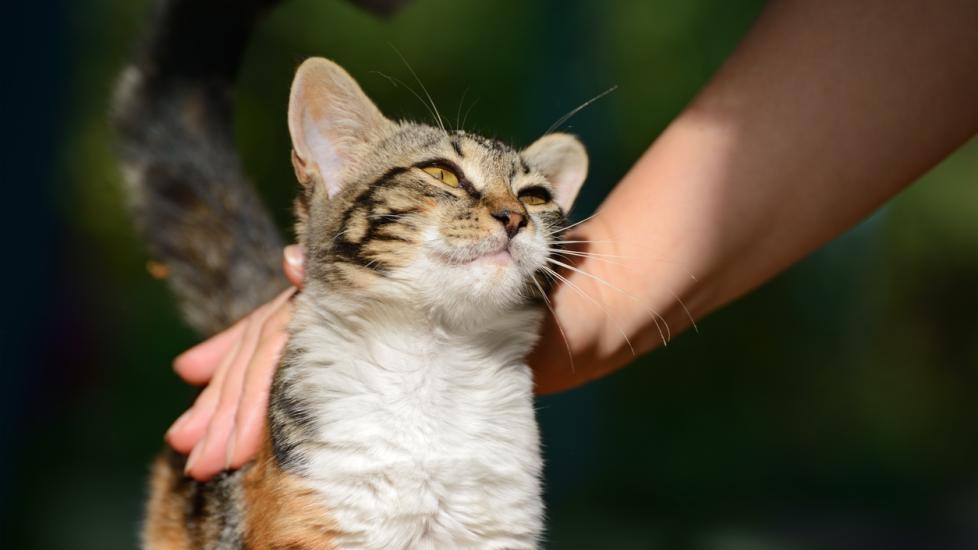Is My Cat Happy?
Do you ever look at your cat and wonder whether they are happy?
Cats don’t tend to wear their emotions on their sleeves, like many dogs do. However, cats experience the full range of emotions like any other animal, and with a little careful observation of their body language and practice, you will be able to tell if your cat is happy and enjoying life.
How to Tell If a Cat Is Happy
So what are some behaviors you might look for to know if your cat is happy?
Here are nine signs of a happy cat:
Purring
Purring is one of the signs that most people recognize as a sign of a happy cat. For the most part, if a cat is purring, you can be assured that they are happy. There are rare instances, though, when a cat purrs because they are frightened or hurt, so you’ll need to take the circumstances into account.
But if your cat is curled up next to you and seems relaxed, and their motor starts, you know for sure that your cat is content.
Kneading (Making Biscuits)
Kneading often accompanies purring. It’s known by a variety of names, including “making biscuits,” because cats make the same motion with their paws as if they were kneading some dough. Cats might knead a blanket or their favorite people or something soft, and it’s often the height of contentment.
Thought to be a throwback to the security that kittens feel when kneading on their mother, kneading is a clear sign that a cat is extremely happy.
Drooling
Drooling might be one of the less appealing ways cats show their affection. Some cats will drool generous amounts of saliva while being cuddled and pet. It can be hard to remember that this is, indeed, a sign of happiness.
Keep in mind that happy drooling only occurs while a cat is getting attention—a cat that is drooling without stimulation may have a medical problem that should be investigated. In this case, give your vet a call.
Friendly, Curious Attitude
Friendly and curious are other descriptions that fit the happy cat well. A cat that approaches you with their tail high, rubs against you, butts you with their head, and seems interested in what your hands smell like or what you are carrying, is probably a happy cat.
Playfulness
Happy cats also like to play, especially younger cats. Often this play may be solo, such as attacking a hanging feather or chasing a toy mouse down the hall, but other times it may include human family members. However, rest assured—a cat that is playing is most decidedly a happy kitty!
Normal Eating, Sleeping, and Grooming Habits
Perhaps the most subtle signs of a happy animal are those that also indicate a healthy animal. A happy cat will do their routine things on schedule—they eat well (too much or too little eating can be a sign of poor health), sleep an appropriate amount (most cats will sleep close to 20 hours a day), and keep their coat well-groomed and shiny.
If you’ve noticed any changes in your cat’s appetite, sleep schedule, or grooming routine, talk to your veterinarian.
Using the Litter Box
Happy cats use the litter pan as expected. Cats can show stress by urinating or defecating in places they aren’t supposed to, so a cat that isn’t using the litter box often or at all either has a medical issue or is trying to communicate that they are under stress.
Slow Blinks
One of the unmistakable and totally endearing signs of kitty bliss is slow blinking. Warm eyes, followed by a slow and unmistakable blink is one of the most heartwarming signs of kitty happiness and love.
Conversation
Direct eye contact followed by meowing is also a certain sign of happiness. Sometimes it’s only one meow, and other times, multiple meows. This is a certain sign of happiness—as well as a way to say, “please get me a treat,” or “time for scratches,” and even “brush me”!
Although cats are much less obvious than dogs, they do experience the same emotions. Signs of a happy cat may be as subtle as an upright tail and a rub on your leg, a joyous slow blink, a quiet purr, or making some biscuits, so be on the lookout!
Featured Image: iStock.com/Serg_Velusceac
